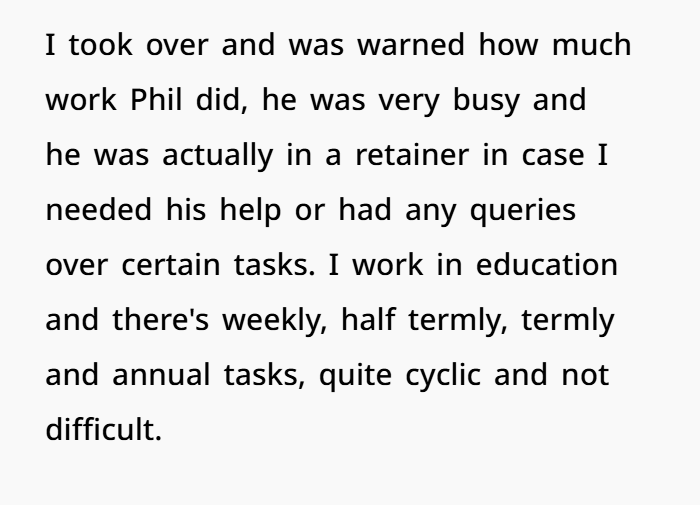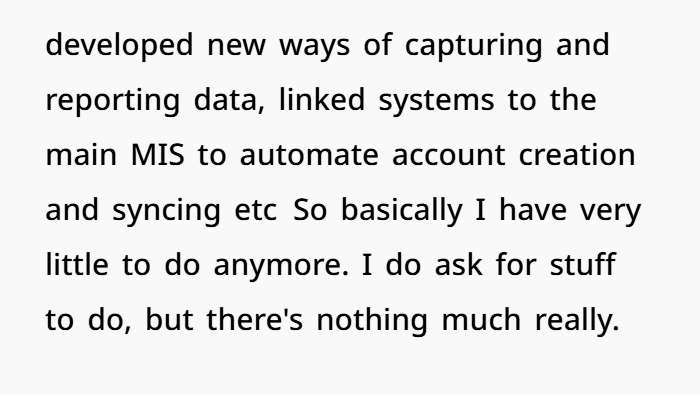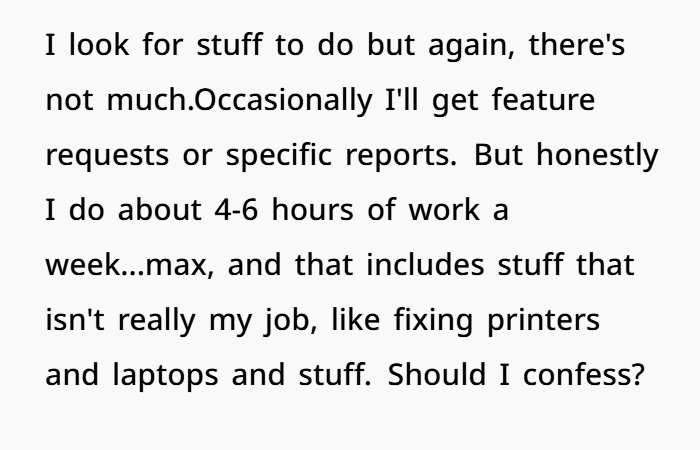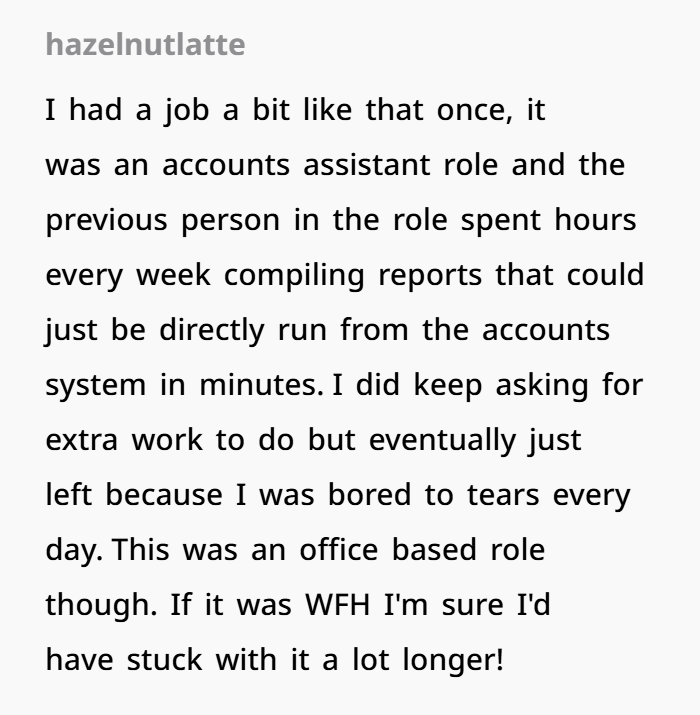Man Works 50+ Hours a Week, Only for His Replacement to Automate the Job and Coast
In the dynamic world of educational technology, efficient system management can dramatically reshape job roles. One database administrator inherited a position previously held by an overwhelmed predecessor who, despite working 50+ hours a week, struggled to manage daily operations. Armed with a stronger understanding of database capabilities and automation, the new hire quickly streamlined nearly all reporting tasks—daily, weekly, and annual—through smart integration with the institution’s management information systems (MIS).
Now, with only a handful of actual work hours required each week, they face a peculiar dilemma: should they admit that 90% of their responsibilities have been automated, risking potential job restructuring, or continue operating quietly within the system they optimized? Their story poses serious questions about workplace ethics, perceived productivity, and the evolving nature of work in highly automated environments.
A woman automated 90% of her daily tasks at work and now only works 4-6 hours a week

With so much time on her hands, she started wondering whether she should confess to her boss or use the time for hobbies and training





The situation presented here highlights a growing phenomenon in today’s workforce: the automation of knowledge work through software and data integration. According to the Harvard Business Review, roles centered on routine tasks are particularly vulnerable to automation, leading to a future where automation management—not manual labor—becomes the core skill.

By automating daily reporting, account creation, system syncing, and even data capture, the employee in question exemplifies the principles of process automation in education IT. In fact, McKinsey & Company notes that up to 45% of activities individuals are paid to perform can be automated by adapting currently demonstrated technologies.
However, this raises an important ethical and professional question: Should employees disclose when their role has drastically changed due to their own innovations? From an HR compliance perspective, transparency is crucial. Employers rely on accurate workload assessments to make decisions about staffing, resource allocation, and budgeting. Hiding the truth might seem harmless, but it could have long-term implications if discovered, including breach of trust.
On the flip side, quiet automation isn’t uncommon. Employees often hesitate to reveal major productivity gains out of fear of job redundancy, especially in sectors like education where budgets are tight and administrative roles are frequently scrutinized. Consulting with management about the opportunities for further organizational improvements—rather than simply admitting surplus capacity—could reposition the employee as a strategic asset, not a liability.

The rise of digital transformation initiatives within education institutions further complicates this issue. Many organizations are actively seeking ways to optimize operational efficiency through data analytics, RPA (Robotic Process Automation), and cloud-based MIS solutions. Employees who automate their tasks and then use the freed-up time to contribute to larger strategic initiatives align perfectly with future-forward workforce models advocated by EDUCAUSE.
ltimately, navigating this situation wisely involves:
- Proactively suggesting new projects or improvements,
- Offering to train colleagues on system automations,
- Helping the institution expand digital capabilities,
- Framing automation as a value-add rather than a problem.
Thus, instead of a risky confession, a strategic pivot could turn the situation into a career-defining opportunity.
The woman explained the particulars of her job in the comments








